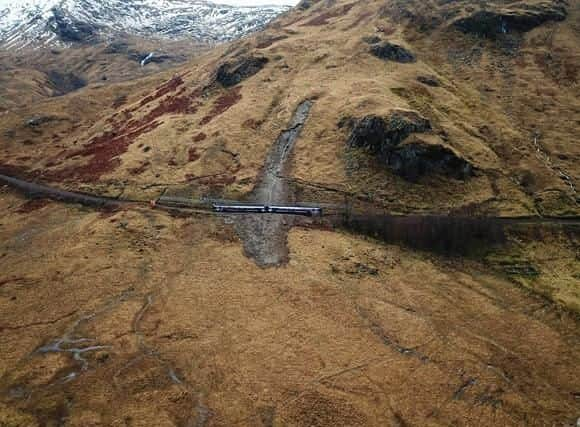Highland rail landslip ploughed through new protective fence


The five passengers and two crew on board escaped injury when the train was derailed by running into the 1,000-tonne landslide, which happened above Loch Eilt on the Fort William-Mallaig line on 22 January.
The damage closed the route for a week while the Glasgow-bound train was recovered and track repaired.
Advertisement
Hide AdAdvertisement
Hide AdThe RAIB said debris destroyed part of a fence installed recently to protect the line from loose boulders rolling down the slope.


It said the incident, which happened in darkness just after 6:45am, followed "significant snow melt and moderately heavy rainfall.
Investigators from the UK Department for Transport body will examine how well Network Rail protected the line from such combined impacts and how it protected the line from landslip debris.
Passengers were evacuated by a specialist rail vehicle.


A RAIB spokesperson said: "Our investigation will seek to identify the sequence of events which led to the accident and will consider the arrangements for protecting the railway from landslip debris at this location, Network Rail’s procedures for managing the combined effect of rain and melting snow any underlying management factors."
A Network Rail spokesperson said: “The safety of passengers and staff on our railway is of vital importance to Network Rail.
"We have already begun our own internal investigation into this incident and will work closely with the RAIB is it completes its inquiry.”


The incident comes nearly four years after the RAIB criticised Network Rail for allowing trains to run in areas at significant risk of landslides.
Its investigation into six incidents, including three in Scotland, found the body should make a series of improvements such as better monitoring of the land around tracks and the deployment of staff to danger areas to warn drivers.
Advertisement
Hide AdAdvertisement
Hide AdIn 2012, a freight locomotive crashed into debris after a landslide and plunged down a hillside.
Three weeks later and within hours of each other, ScotRail trains carrying a total of more than 100 passengers and crew hit landslips near Falls of Cruachan in Argyll and Rosyth in Fife.


The report said if the Argyll passenger train had been derailed by the debris, “it is possible it would have fallen down an adjacent slope”.
The report said: “The landslips were caused by factors including heavy rain, absent or ineffective drainage and activities undertaken, or not undertaken, on neighbouring land.
“In several instances. trains were being operated without special precautions when there was a significant risk of encountering a landslip.”
The report also said: “There is a lack of clarity about who should be carrying out visual checks for risks which can develop on neighbouring land between examinations, which take place at intervals of up to ten years.”